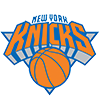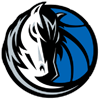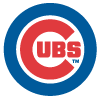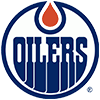RotoWire Roundtable: Fantasy Baseball Top 300 ranker, reporting for duty. Once again, I'll be joining Erik Halterman, Jeff Erickson and Clay Link as we share our top 300 for 2025 drafts. The first installment is slated to drop this weekend. Did I just write, "slated to drop?"
I have tweaked my process. As most know, I use a formulaic foundation that begins with player projections, then converts them to expected earnings. My top 300 (and personal cheat sheet) hasn't strayed much from that order.
Adept drafters understand a roundtable ranking, ADP and even their own cheat sheet are just guides. It's never simply, "take one off the top."
I'm not pleased with my recent draft performances. It could be poor player evaluation. However, many other people have had success using my projections and rankings. It's clear that they do a better job of reading their rooms, resulting in superior roster construction.
Clearly, rankings should be fluid within a draft. Some are better at using touch and feel; others are wired to trust the numbers. I'm firmly entrenched in the latter category.
I still have work to do in this area, but I've identified a couple of spots that need improvement, such as favoring a number to push me in the right direction. My top 300 now includes a couple of mathematical alterations that adjust the rankings, and which should help to correct my deficiencies. Ultimately, I need to do a better job in the subjective approach, but fine-tuning the objective
RotoWire Roundtable: Fantasy Baseball Top 300 ranker, reporting for duty. Once again, I'll be joining Erik Halterman, Jeff Erickson and Clay Link as we share our top 300 for 2025 drafts. The first installment is slated to drop this weekend. Did I just write, "slated to drop?"
I have tweaked my process. As most know, I use a formulaic foundation that begins with player projections, then converts them to expected earnings. My top 300 (and personal cheat sheet) hasn't strayed much from that order.
Adept drafters understand a roundtable ranking, ADP and even their own cheat sheet are just guides. It's never simply, "take one off the top."
I'm not pleased with my recent draft performances. It could be poor player evaluation. However, many other people have had success using my projections and rankings. It's clear that they do a better job of reading their rooms, resulting in superior roster construction.
Clearly, rankings should be fluid within a draft. Some are better at using touch and feel; others are wired to trust the numbers. I'm firmly entrenched in the latter category.
I still have work to do in this area, but I've identified a couple of spots that need improvement, such as favoring a number to push me in the right direction. My top 300 now includes a couple of mathematical alterations that adjust the rankings, and which should help to correct my deficiencies. Ultimately, I need to do a better job in the subjective approach, but fine-tuning the objective basis is a starting point.
One of my shortcomings is being too safe. I'm not suggesting I need to go hog wild with unproven players. However, I can do a better job balancing floor and ceiling.
Upside can manifest in different ways, with playing time being paramount. If I have a conservative projection for a player, it's also reflected in the playing time. If I'm wrong, and the player performs at a higher level, he'll garner more action.
Most are aware of the Steamer 600, prorating Steamer projections so every batter collects 600 plate appearances. I did this with my hitting projections. For pitchers, 175 innings were assigned to starters and 65 frames to relievers. The adjusted projections were converted to earnings, generating rankings based primarily on projected skills.
I'm still optimizing the next step, but I have a working model with a weighted average of straight projections and the adjusted version. As expected, injury-prone players move up while those relying on volume fall. This method doesn't account for under-projecting skills, but it does factor the playing time boost not captured by the regular projections.
Jumping a player up five or six spots in the rankings shouldn't make much of a difference, but it does for me. My 2025 Roundtable Ranking incorporates this adjustment.
The other change addresses how my rankings don't tend to represent the market. This is a slippery slope. I'm not saying I alter my projections to align with the market, but if I lag with most of my pitching rankings because I favor waiting, it does a bit of a disservice to rank pitchers so much later than they'll be drafted at most tables. Addressing this turned out to be easy, and I hope logical.
We tend to get NFBC-centric in these parts. Even though for every 1,000 high stakes players there are over 1,000 who don't dabble in that arena, they're a large part of our audience and, at this point in the offseason, one of the only games in town. The top 300 isn't exclusively geared toward the NFBC, but let's be practical, that's the audience most likely to find early utility. Sure, many people use it in keeper formats to choose their freeze list and make trades, but we're mostly catering to the early Draft Champions and Best Ball crowd.
Be it in a draft or auction, NFBC drafters allocate 62 to 63 percent of their draft capital to hitters. Most private leagues, along with Tout Wars and LABR, allot around 69 percent to bats. My standard rankings assumed a 69:31 hitting to pitching split. Now, I am using 62:38, forcing pitching up the rankings.
The other change involves saves. This isn't the time to go into the weeds on valuation theory, but the way saves are now distributed in MLB isn't properly captured by conventional valuation techniques. The way to account for this in my pricing algorithm is assigning more than 20 percent of the pitching budget to saves. Since the money must come from somewhere, I funnel it from wins. Wins have the most variance, and many strategize to draft solid ratios and hope the wins follow.
The intention is for the adjustments to better reflect the player's ranking, as opposed to where I would consider drafting them. Both approaches have merit, but after a lot of contemplation, the former is more useful. I don't have to select my 28th ranked player with pick No. 28. If he doesn't fit my roster construction, I'll go elsewhere. However, knowing that in a vacuum, he's my 28th best player in the pool is more helpful than seeing I wouldn't take him unless he fell to No. 37.



































